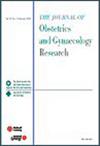Comparison of clinical effects between sacrospinous ligament fixation and extraperitoneal high uterosacral ligament suspension for patients: A retrospective cohort clinical trials
Abstract
Aim
The aim of the study is to compare the effect of extraperitoneal high uterosacral ligament suspension (EHUS) and sacrospinous ligament fixation on lower urinary tract symptoms (LUTS) and anatomical reduction in patients with pelvic organ prolapse (POP).
Methods
This retrospective cohort study concluded 91 patients with POP who underwent EHUS or sacrospinous ligament fixation (SSLF) for apical repair. The primary outcome was the effect of the two operations on anatomical reduction. The main secondary outcomes included improvement of questionnaire scores, satisfaction, and subjective prolapse rate. Categorical variables, Student's t test, and the Mann–Whitney U test were used for analysis.
Results
All patients' scores of POP-Q were significantly improved after surgery. The scores of urinary frequency and urgency in the SSLF group improved significantly from 6 months after surgery, with statistical significance (p < 0.05), while the scores of nocturia and urgency in the EHUS group improved from 1 month after surgery (p < 0.05). The scores of questionnaires in both groups were significantly lower than those before surgery, while the EHUS group showed more significant improvement (p < 0.05).
Conclusion
EHUS is easy to operate, has a short operative time, fewer perioperative and postoperative complications, and the apical can be suspended well if the prolapse is not severe. It also has a certain degree of relief for LUTS, which is a new type of operation that is worthy of clinical promotion.

 求助内容:
求助内容: 应助结果提醒方式:
应助结果提醒方式:


